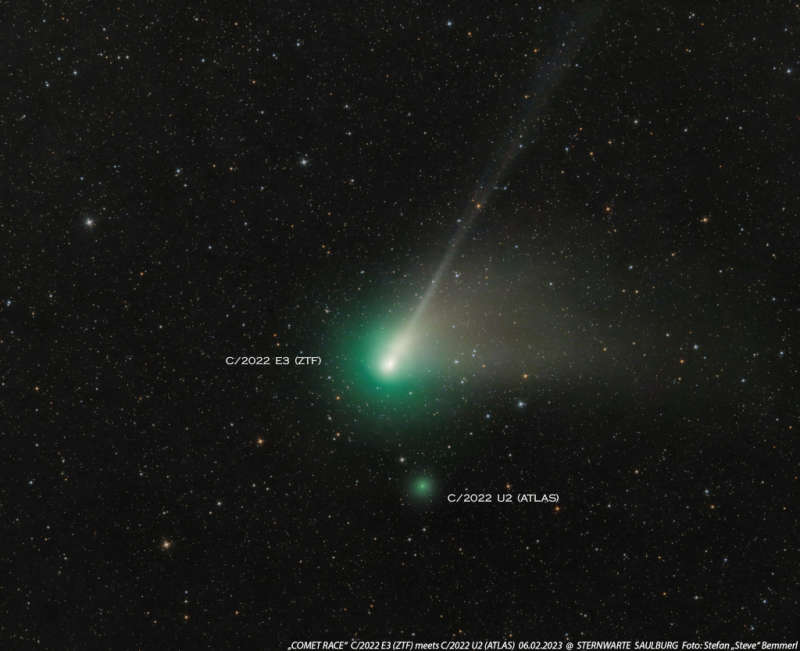
|
Credit & Copyright: Stefan Bemmerl
Explanation:
Fading as it
races
across
planet Earth's northern skies
comet C/2022 E3 (ZTF)
shares this telescopic frame
with comet
C/2022 U2 (ATLAS).
Captured on the night of February 6 from
a garden observatory in Germany's Bavarian Forest, the starry field of
view toward the constellation Auriga spans about 2.5 degrees.
Discovered by
sky survey projects in 2022 (the
Zwicky Transient
Facility
and the
Asteroid
Terrestrial-impact Last Alert System)
these
long-period
comets
are outbound, reaching perihelion just last month.
The much fainter comet ATLAS made its closest approach to our fair
planet on January 29 at a distance of about 4.6 light-minutes, compared
to a mere 2.4 light-minutes for comet ZTF on February 2.
This comet ATLAS lacks the well-developed tails of the
formerly
naked-eye comet ZTF.
But both comets sport greenish tinted comas,
emission from diatomic carbon molecules fluorescing in sunlight.
Continuing its dash across planet Earth's sky, the
good-binocular
comet
ZTF will appear close to bright planet Mars tonight.
|
January February March April May June July August September October November December |
| ||||||||||||||||||||||||||||||||||||||||||||||||
NASA Web Site Statements, Warnings, and Disclaimers
NASA Official: Jay Norris. Specific rights apply.
A service of: LHEA at NASA / GSFC
& Michigan Tech. U.
Based on Astronomy Picture
Of the Day
Publications with keywords: comet
Publications with words: comet
See also:
- APOD: 2025 November 17 Á Comet Lemmons Wandering Tail
- APOD: 2025 September 30 Á Comet Lemmon Brightens
- APOD: 2025 September 29 Á Two Camera Comets in One Sky
- APOD: 2025 September 26 Á A SWAN an ATLAS and Mars
- APOD: 2025 September 18 Á Comet C/2025 R2 SWAN
- APOD: 2025 September 16 Á New Comet SWAN25B over Mexico
- APOD: 2025 July 7 Á Interstellar Comet 3I ATLAS
